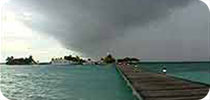
population displacement ~ Asia/Pacific region

Will We lose The Maldives?
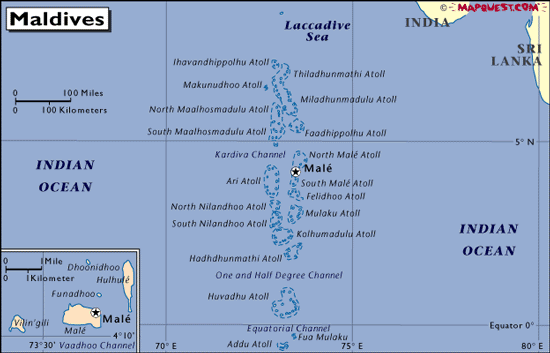 To
visit the Maldives is to witness the slow death of a nation.
To
visit the Maldives is to witness the slow death of a nation.
For
as well as being blessed with sun-kissed paradise islands and pale,
white sands, this tourist haven is cursed with mounting evidence of
an environmental catastrophe. www.news.bbc.co.uk
The
country is portrayed by travel companies as a tropical paradise
To
the naked eye, the signs of climate change are almost imperceptible,
but government scientists fear the sea level is rising up to 0.9cm a
year.
Since 80% of its 1,200 islands are no
more than 1m above sea level, within 100 years the Maldives could
become uninhabitable.
The country's 360,000
citizens would be forced to evacuate.
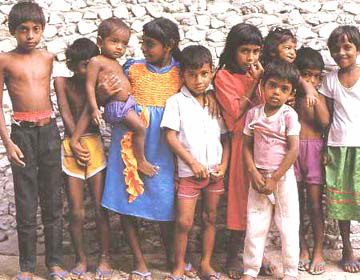
Map image: http://www.mapquest.com/
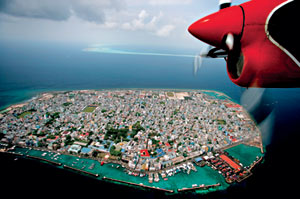
CITY ON A
LILY PAD:
On the capital island of Male, where 80,000 people live less than 4 ft. above sea level, the margin of safety is increasingly slim.
A12_s3
N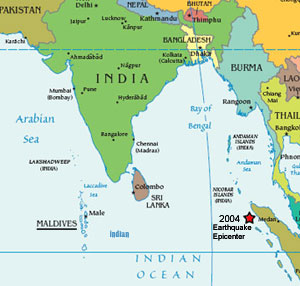 orth
and South Malosmadulu Atolls are in the Maldives, an island republic
in the northern Indian Ocean, southwest of India.
orth
and South Malosmadulu Atolls are in the Maldives, an island republic
in the northern Indian Ocean, southwest of India.
The Maldives are made up of a chain of 1,192 small coral islands, which are grouped into clusters of atolls. It has a total area of 298 square kilometers and a population of about 330,000.
The capital and largest city is Male, with a population of about 80,000. Arguably the lowest-lying country in the world, the average elevation is just 1 meter above sea level.
Area: 298 sq km. The country consists of 1,200 coral islands – out of of which 201 are inhabited – grouped in a double chain of twenty-seven atolls. Most atolls are ringshaped coral reefs supporting five to ten inhabited islands and twenty to sixty uninhabited islands.
Average size of islands one to two kilometers and height of 1.5 meters above sea level.
Highest spot is 3 meters above sea level.
Population: 339 330 (est. July 2004) http://www.sasnet.lu.se/maldives.html
This garland of 1,190 coral islands is situated southwest of India. Among the country’s islands, 200 are inhabited and about 80 are popular tourist resorts favoured by scuba divers for their abundant marine life.
Permanent submersion, repeated flooding, faster erosion of cliffs and beaches, and increasingly saline estuaries and salt contamination of groundwater are just some of the possible consequences of a big rise in sea level in low-lying regions.
K elai
Island, a piece of paradise in the Maldives has a population of about
2000 people.
elai
Island, a piece of paradise in the Maldives has a population of about
2000 people.
But there is a dark cloud hanging over the island as climate change makes the sea level rise.
The island lies just 2 meters above sea level and 30% of the island has dissapeared during the last 50 years and it might be gone during my lifetime...
A substantial decline in agricultural productivity and other climate change impacts throughout the Asia-Pacific could lead to the large-scale population displacement of hundreds of millions of people. Woodruff, Hales, et al. (2005). op cit.
the number of displaced people within the Asia-Pacific region is likely to increase by hundreds of thousands of people, most of whom will be internally confined within slums and camps.
A12_s4